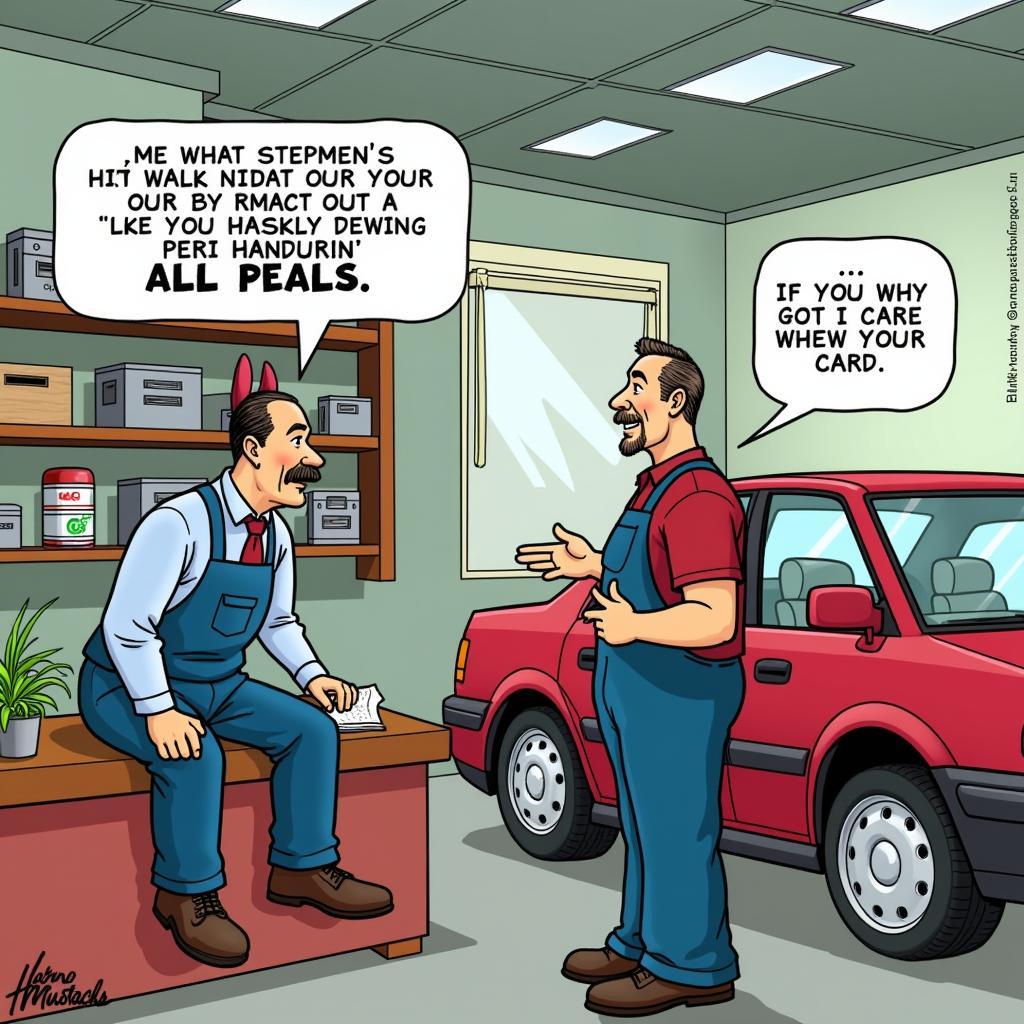Owning a car that has crossed the 200,000-mile mark is a significant milestone, but it also comes with its share of challenges. While some may consider it time to trade in for a newer model, many drivers choose to keep their trusty vehicles running for as long as possible. This guide will delve into the common problems you might encounter with cars exceeding 200,000 miles, offering insights and practical solutions for owners, mechanics, and technicians.
Understanding the Challenges of High Mileage Cars
Cars, like any complex machine, experience wear and tear over time. As mileage accumulates, components begin to deteriorate, leading to various issues that impact performance, reliability, and safety. The challenge with cars over 200,000 miles is that multiple systems are likely to require attention, making it crucial to understand potential problems and proactively address them.
Common Problems with Cars Over 200,000 Miles
Engine Issues
- Engine Oil Leaks: Seals and gaskets wear out, causing oil leaks that can lead to engine damage.
- Engine Misfires: Spark plugs, ignition coils, and wires deteriorate, leading to misfires that can affect fuel efficiency and power output.
- Timing Belt/Chain Failure: Timing belts and chains wear out and can break, causing significant engine damage.
- Valve Stem Seals: These seals prevent oil from entering the combustion chamber, but they can fail, leading to oil consumption.
Transmission Problems
- Transmission Slippage: Worn clutches or low transmission fluid can cause gear slippage, leading to rough shifting or inability to engage certain gears.
- Transmission Fluid Leaks: Seals and gaskets in the transmission can wear out, causing leaks that can lead to transmission failure.
Suspension and Steering Issues
- Shocks and Struts: Worn shocks and struts can lead to a rough ride and reduced handling.
- Tie Rods and Ball Joints: These components connect the steering wheel to the wheels and can wear out, causing loose steering and poor handling.
- Wheel Bearings: Worn bearings can cause noise, vibration, and uneven tire wear.
Electrical System Issues
- Battery: Batteries have a limited lifespan and can fail, leading to starting problems and other electrical issues.
- Alternator: This component charges the battery and powers electrical accessories. Failure can lead to a dead battery and other electrical problems.
- Sensors: Sensors throughout the car can malfunction, leading to inaccurate readings and potential engine problems.
Other Common Problems
- Brake System: Brake pads and rotors wear out, and calipers can seize, leading to reduced braking performance.
- Exhaust System: Components like catalytic converters, mufflers, and pipes can rust and deteriorate, causing noise and emissions problems.
- Cooling System: Hoses, water pumps, and radiators can crack or leak, leading to overheating and engine damage.
Proactive Maintenance: Key to Keeping Your Car Running Smoothly
Regular Oil Changes
“Changing the oil regularly is the most important thing you can do to extend the life of your engine,” says John Smith, a certified automotive technician with over 20 years of experience. As a rule of thumb, change your oil every 3,000 miles or as recommended by your car’s manufacturer.
Inspecting Belts and Hoses
Regularly inspect your serpentine belt, timing belt, and hoses for cracks, wear, or leaks. Replace them proactively to avoid potential breakdowns.
Checking Fluid Levels
Ensure all fluids are at the proper levels, including engine oil, transmission fluid, brake fluid, power steering fluid, and coolant.
Addressing Warning Lights
Never ignore warning lights on your dashboard. They indicate potential problems that need immediate attention.
Regular Inspections
Schedule regular maintenance inspections to catch issues early before they escalate into major problems.
Common Mistakes to Avoid
- Ignoring Warning Lights: Don’t disregard warning lights, as they are your car’s way of communicating potential problems.
- Delaying Maintenance: Proactive maintenance is crucial to prevent costly repairs in the future.
- Using Low-Quality Parts: Use high-quality parts to ensure durability and reliability.
- Overloading Your Vehicle: Exceeding your car’s weight capacity can put strain on the engine, transmission, and suspension.
Conclusion
Cars over 200,000 miles may present challenges, but they can still offer reliable transportation with proper care. By understanding common problems, practicing proactive maintenance, and addressing issues promptly, you can extend the life of your vehicle and keep it running smoothly for years to come.
If you’re facing a challenging situation with your high-mileage car, don’t hesitate to reach out to us for expert advice and support.
AutoTipPro
+1 (641) 206-8880
500 N St Mary’s St, San Antonio, TX 78205, United States
FAQ
- Q: Should I sell my car once it hits 200,000 miles?
A: It depends on the car’s condition and your budget. If it’s well-maintained and doesn’t have major issues, it could still provide reliable transportation. However, if it’s requiring frequent repairs, it might be time for a new vehicle. - Q: How often should I replace parts in a high-mileage car?
A: Replacement intervals vary depending on the part and usage. Consult your owner’s manual or a qualified mechanic for recommendations. - Q: Is it worth investing in a high-mileage car?
A: High-mileage vehicles can be a good value if they’re well-maintained and priced appropriately. However, be prepared for potential repairs. - Q: Can I keep driving my car after 200,000 miles?
A: Absolutely! With proper maintenance, your car can still serve you well even after reaching this milestone. - Q: What are some tips for buying a high-mileage car?
A: Get a pre-purchase inspection from a qualified mechanic, research the car’s history, and negotiate the price based on its condition and potential repair needs.





Leave a Reply